Rock Fracturing Characteristics and Roadway Expansion Application of Static Crushing Agent under Multi-Row Drilling Condition
Abstract
:1. Introduction
2. Performance Testing of SCA and Rock Material
2.1. Performance Testing of Rock Sample
2.2. Performance Testing of SCA
3. Simulation on Rock Fracturing Characteristics
3.1. Simulation Verification
3.2. Optimization Design of Drilling Parameters
4. Engineering Application of Roadway Expansion Using SCA
4.1. Scheme Design of Roadway Expansion
4.2. Construction Techniques and Effectiveness
5. Conclusions
Author Contributions
Funding
Institutional Review Board Statement
Informed Consent Statement
Data Availability Statement
Conflicts of Interest
References
- Yan, C. Study on Cumulative Damage Effects and Stability of Rock Mass under Blasting Loading. Ph.D. Thesis, Central South University, Changsha, China, 2006. [Google Scholar]
- Luo, Y.; Cui, X.R.; Shen, Z.W. Application Study on Controlled Blasting Technology with Shaped Charge in Rock Mass. Chin. Q. Mech. 2007, 28, 234–239. [Google Scholar]
- Zong, Q.; Liu, Q.-H. Application Research on Cutting Technology of Mid-deep Hole Blasting in Coal Mine Rock Tunnel. Blasting 2010, 27, 35–39. [Google Scholar]
- Li, G.; Niu, L.; Li, W. Study on rapid excavation technology for hard rock roadway in coal mine. Int. J. Coal Sci. Technol. 2018, 46, 13–20. [Google Scholar]
- Yang, R.; Li, C.; Chen, J.; Zou, F.; Wang, Y.; Xiao, C.; Zhang, Z. Development history and new technology research progress of rock roadway blasting excavation in coal mines in China. Coal Sci. Technol. 2023, 51, 224–241. [Google Scholar]
- Duan, K. Maintenance of roadways in soft rocks by destress blasting of roadway-rib. J. China Coal Soc. 1995, 20, 311–316. [Google Scholar]
- Zheng, W.; Li, R.; Xu, L.; Hou, X. Review and analysis on research and application of static crushing technology. J. Harbin Inst. Technol. 2021, 53, 190–200. [Google Scholar]
- Xie, Y.; Yang, G.; Huang, X. Experimental Research on Mechanical Properties of Static Breaking Agents. Saf. Coal Mines 2019, 50, 9–16. [Google Scholar]
- Li, Y. Experimental Study on Influence of Water Temperature and Water Agent Ratio on Expansion Performance of Soundless Cracking Agent. Mine Constr. Technol. 2019, 40, 32–35+22. [Google Scholar]
- Li, Y.; Ma, Q. Test and Analysis on Reaction Temperature Variation of Static Cracking Agent. Chin. J. Undergr. Space Eng. 2013, 9, 1282–1289. [Google Scholar]
- Sheng, H.; Lu, X.; Zhou, Z.; Huang, J. Test and Analysis on Change of Volume Expansion Ratio of Static Cracking Agent. Coal Technol. 2017, 36, 80–82. [Google Scholar]
- Ma, D.D.; Ma, Q.Y.; Yuan, P. Test and Analysis on Air Temperature and Water Temperature for Expansion Performance of Static Cracking Agent. Blasting 2014, 12, 124–128. [Google Scholar]
- Xu, L.; Ni, H. Performance Testing and Research of Static Demolition Agents. Sichuan Build. Mater. 2013, 39, 82–84. [Google Scholar]
- Li, P.; Nie, G.-H. Study on the Static Cracking Agent. J. Hubei Univ. Natl. Nat. Sci. Ed. 2012, 30, 159–162. [Google Scholar]
- De Silva, V.R.S.; Ranjith, P.G.; Perera, M.S.A.; Wu, B.; Wanniarachchi, W.A.M. A low energy rock fragmentation technique for in-situ leaching. J. Clean. Prod. 2018, 204, 586–606. [Google Scholar] [CrossRef]
- Xu, D. Development and Application of Static Demolition Technology. Mod. Min. 2012, 27, 105–106+109. [Google Scholar]
- Jiang, N.; Xu, Q.; Long, Y.; Liao, Y.; Lin, W. Expansive pressure characteristic and borehole parameter analysis on large scale borehole soundless cracking. Explos. Shock Waves 2015, 35, 467–472. [Google Scholar] [CrossRef]
- Feng, Y. Experimental Research and Apply on the Soundless Cracking Agent. Master’s Thesis, AnHui University of Science and Technology, Huainan, China, 2010. [Google Scholar]
- He, S. Experimental Study on Static Blasting Fracturing Technology of Hard Rock. Master’s Thesis, China University of Mining and Technology, Xuzhou, China, 2022. [Google Scholar]
- Gao, T.-W.; Wang, H.-L. Application of Non-explosive Demolition Method of Tennel Extension Project in Coal Mine. Blasting 2011, 28, 98–99. [Google Scholar]
- Li, K.; Liang, Y. Application and Analysis of Static Demolition Technology in Expanding Roadway Cross Sections in Coal Mines. Saf. Coal Mines 2010, 41, 126–128. [Google Scholar]
- DZ/T 0276-2015; Regulation for Testing the Physical and Mechanical Properties of Rock. Ministry of Land and Resources of the People’s Republic of China: Beijing, China, 2015.
- GB/T JC506-2008; Soundless Cracking Agent. National Development and Reform Commission of the People’s Republic of China: Beijing, China, 2008.
- Sun, L.; Li, C.; Tie, Y.; Hou, Y.; Duan, Y. Experimental and numerical investigations of adhesively bonded CFRP single-lap joints subjected to tensile loads. Int. J. Adhes. Adhes. 2019, 95, 102402. [Google Scholar] [CrossRef]
- Jiang, Z.; Zheng, W.; Wang, Y.; Sun, P.; Lu, D.; Sun, L. The use of soundless chemical demolition agents in reinforced concrete deep beam demolition: Experimental and numerical study. J. Build. Eng. 2023, 69, 106260. [Google Scholar] [CrossRef]
- Wu, S.-L.; Zhai, C.; Xiang, X.-W.; Yu, X.; Tang, Z.Q. Experimental Study on Jet Orifice of Static Cracking Agent in Drilling Hole. Coal Technol. 2015, 34, 142–145. [Google Scholar]

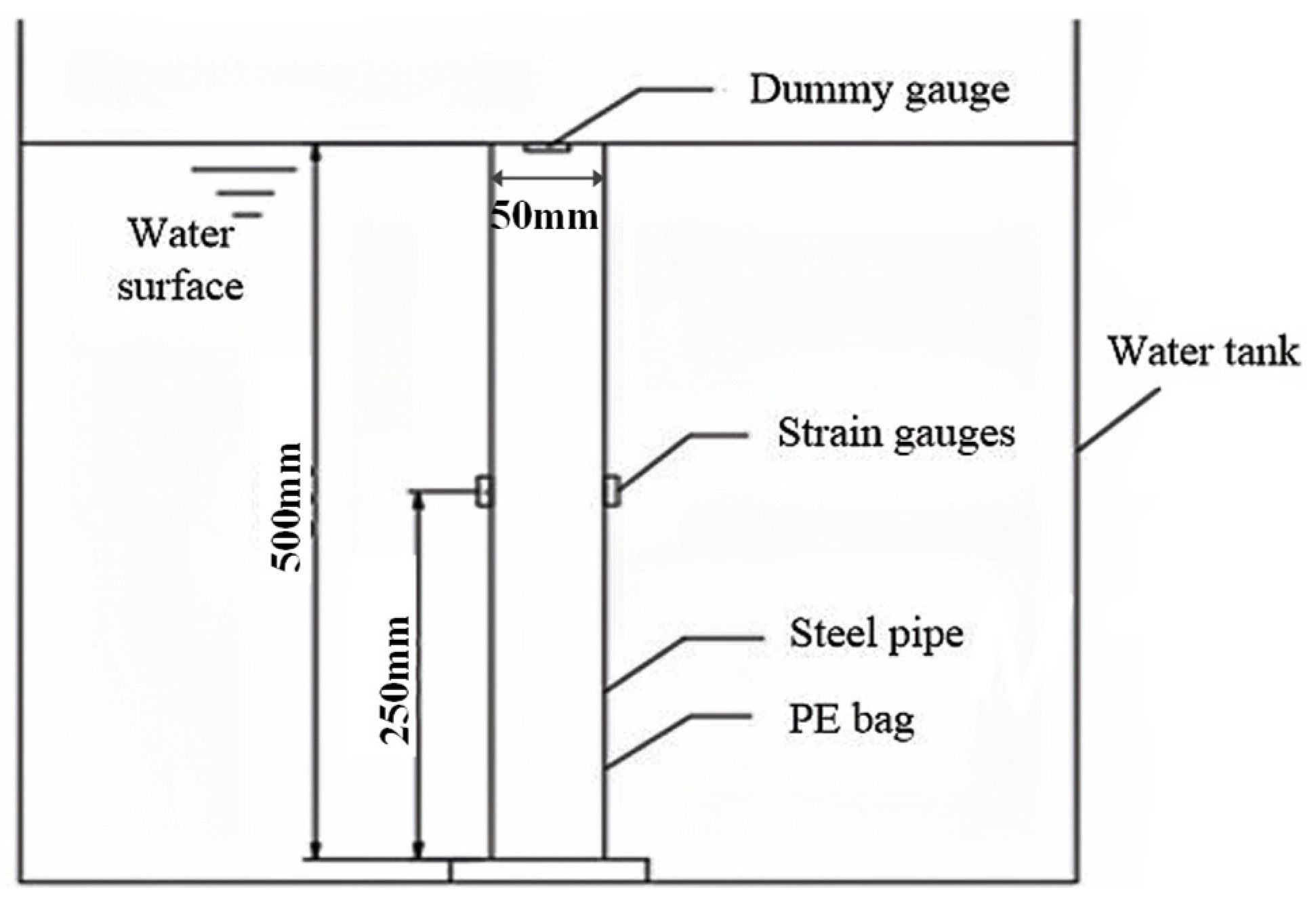

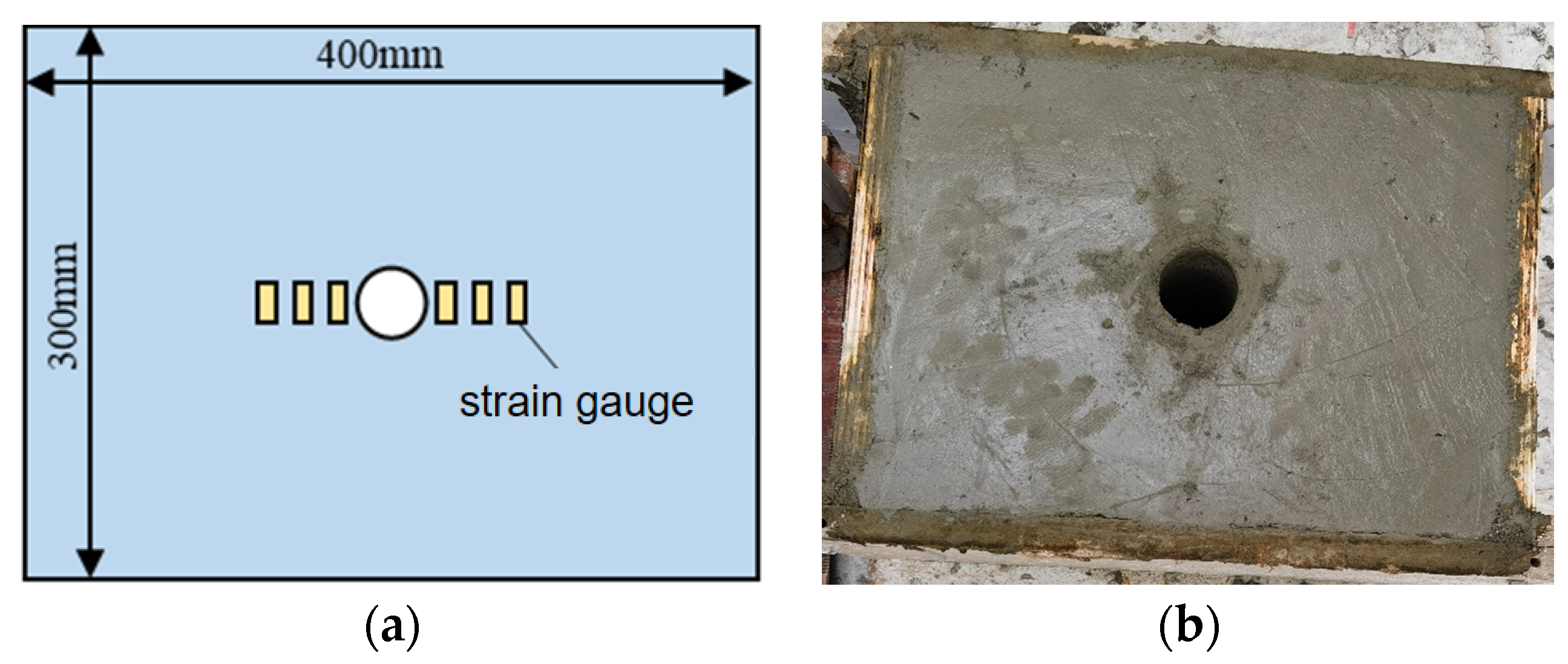
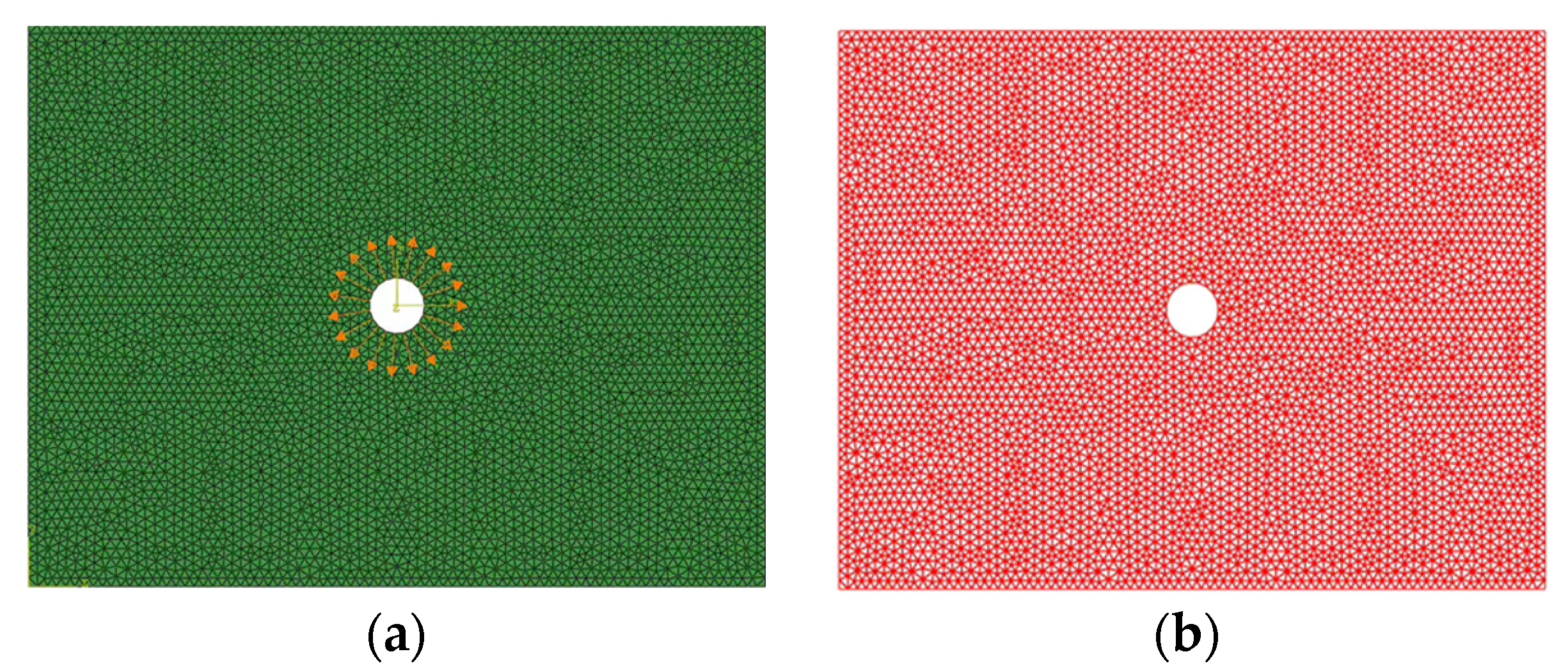


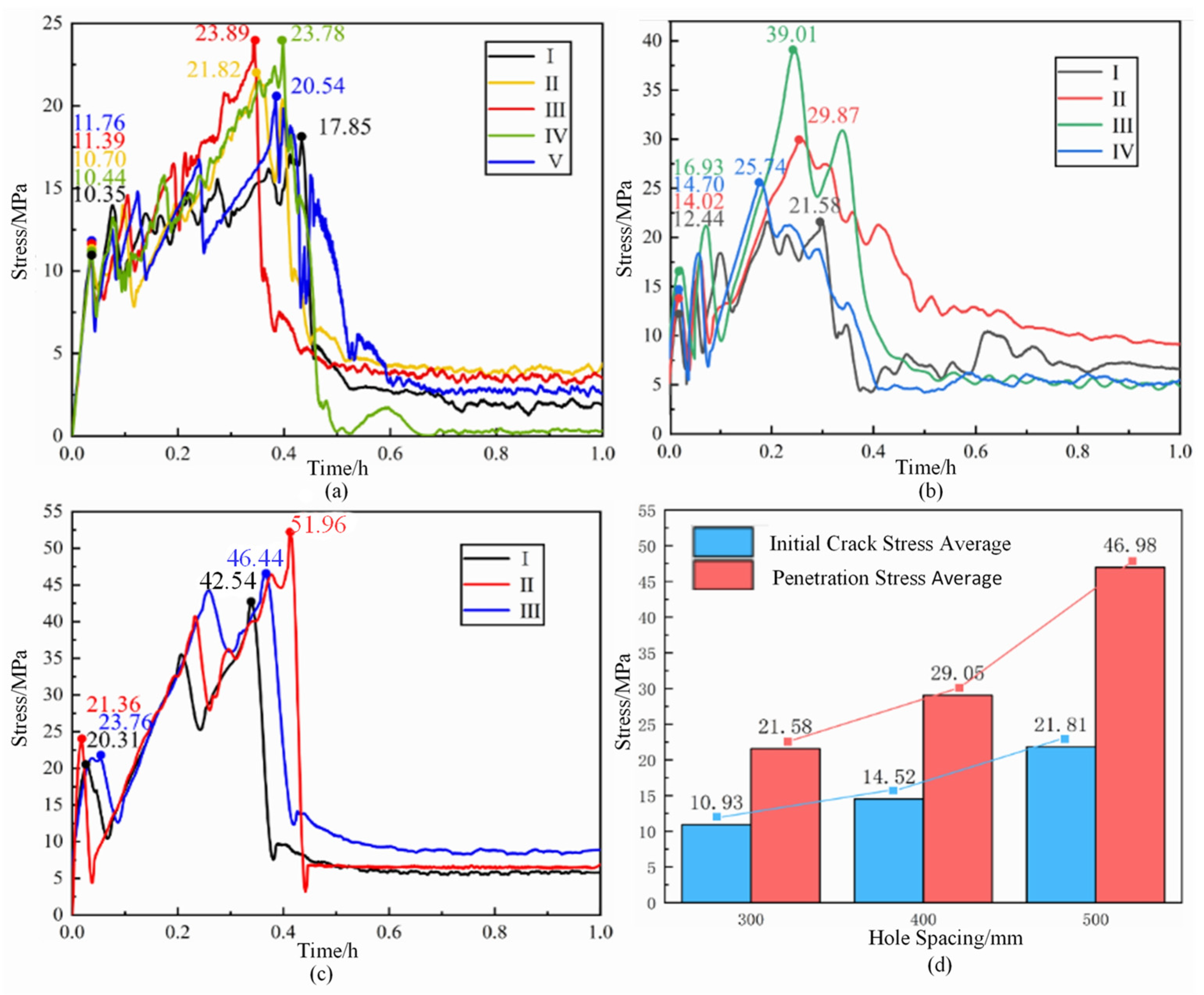
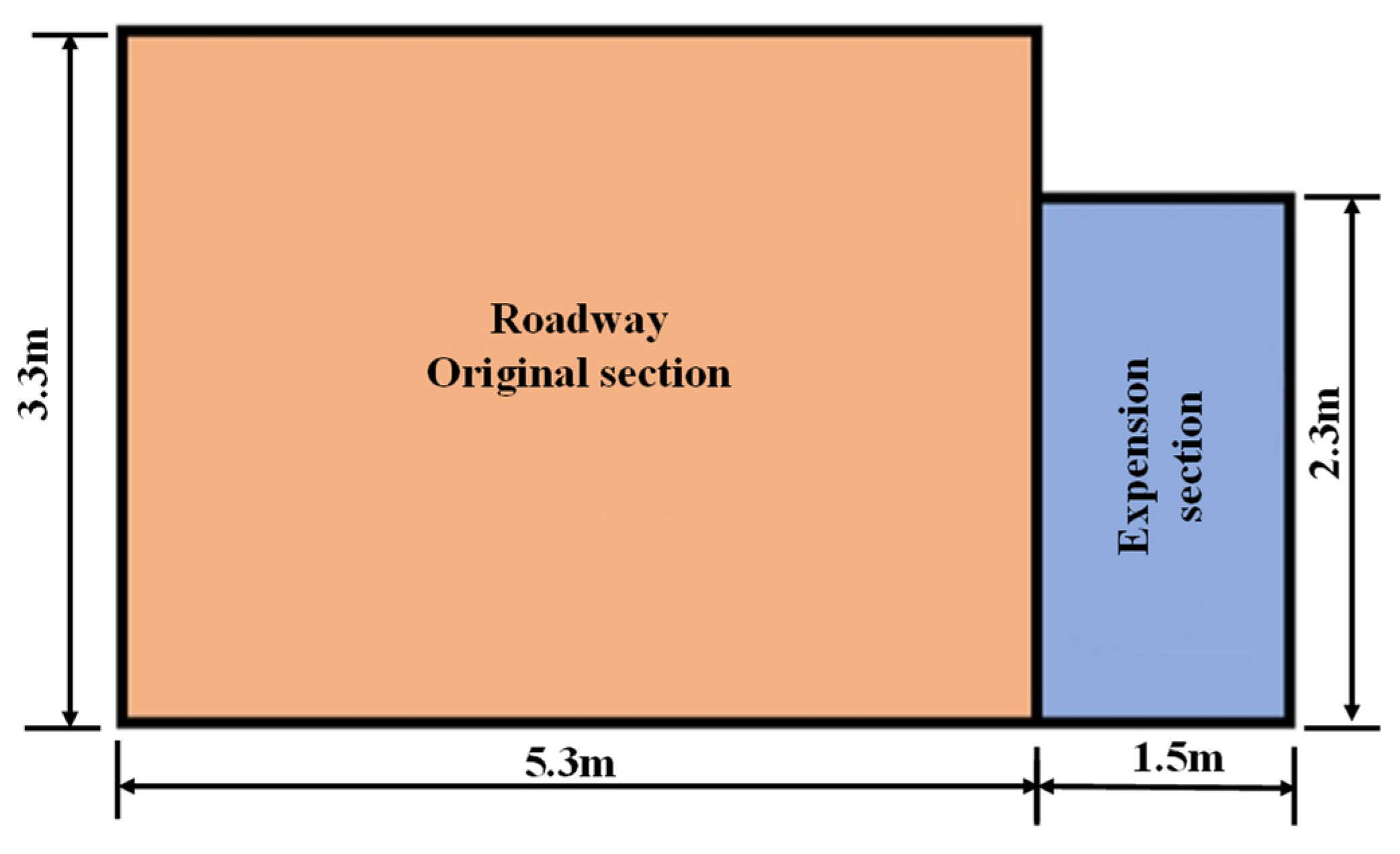
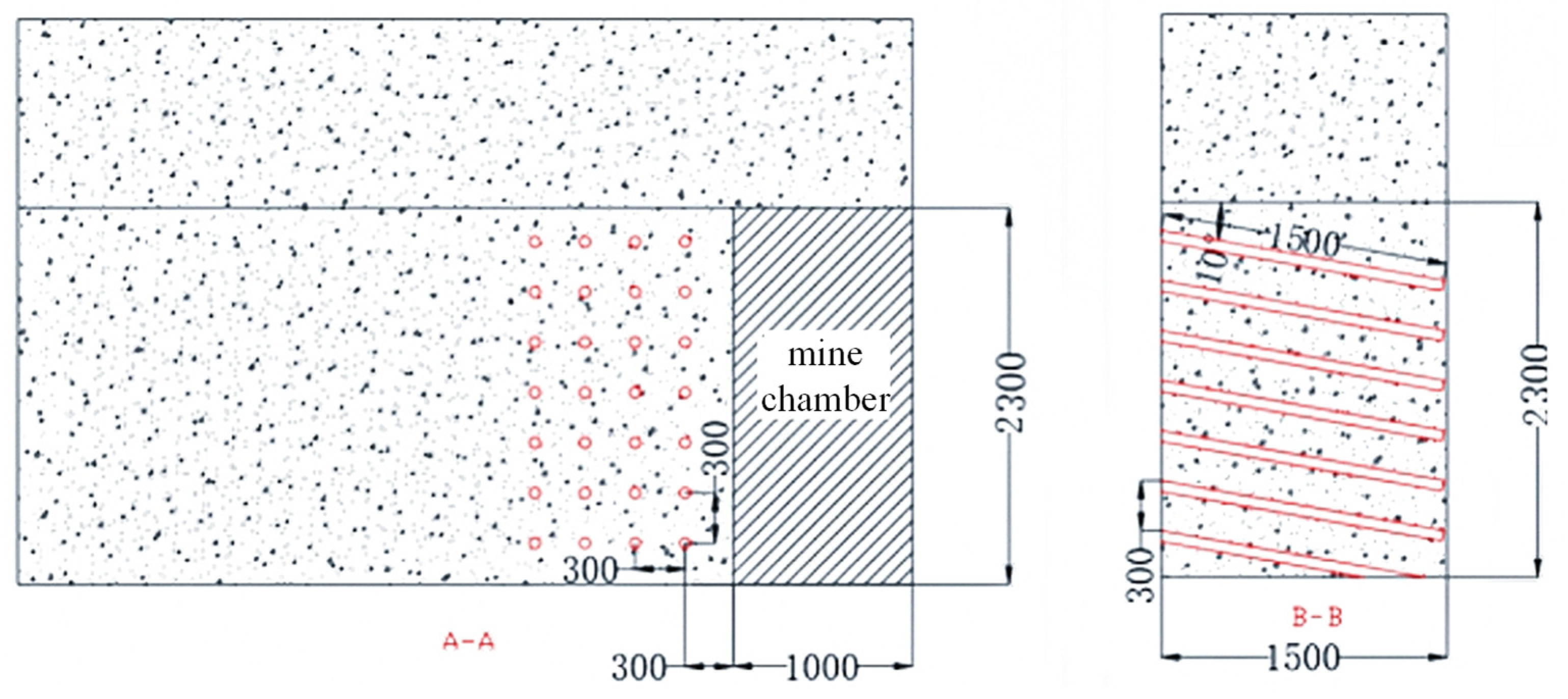
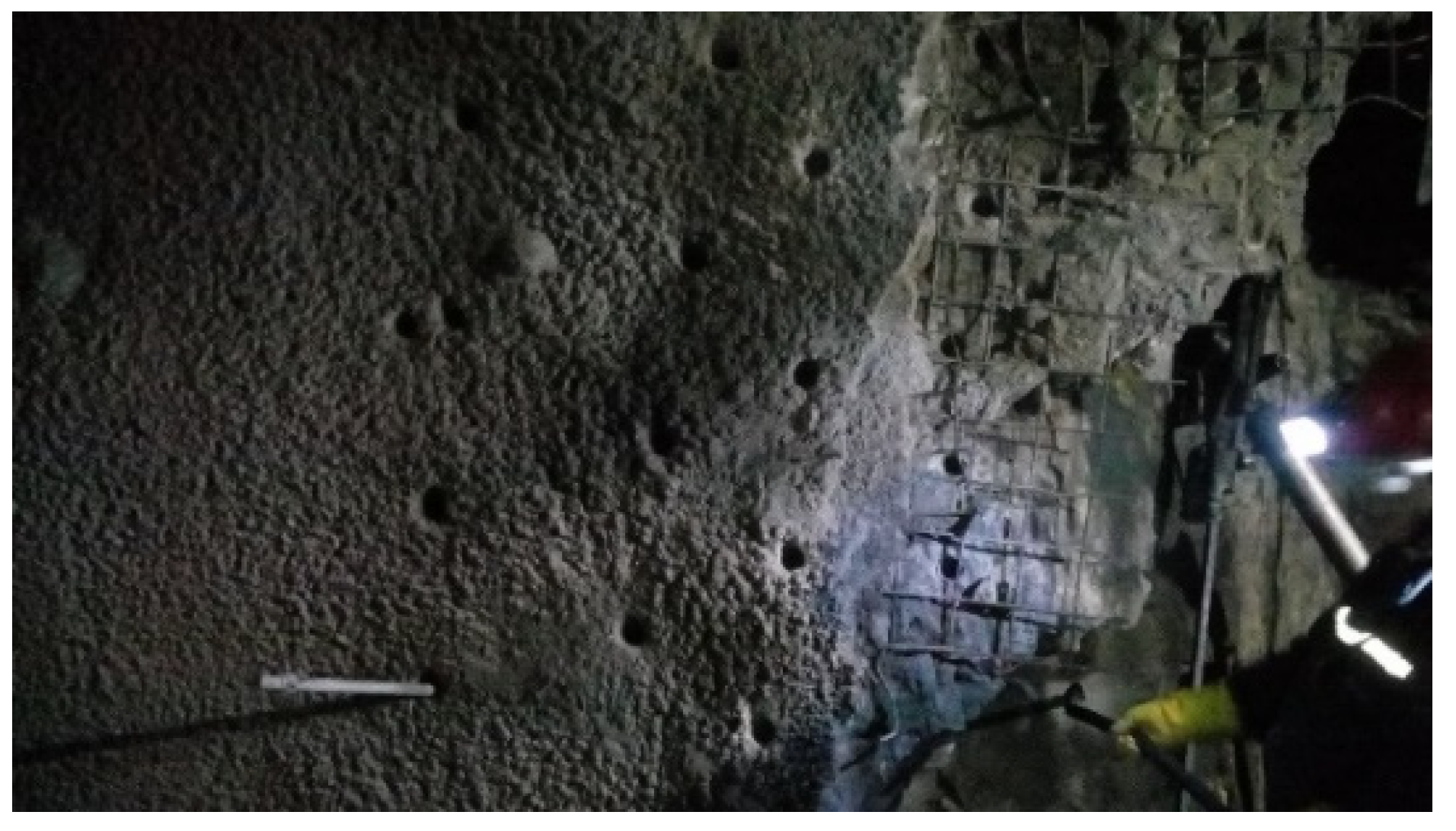

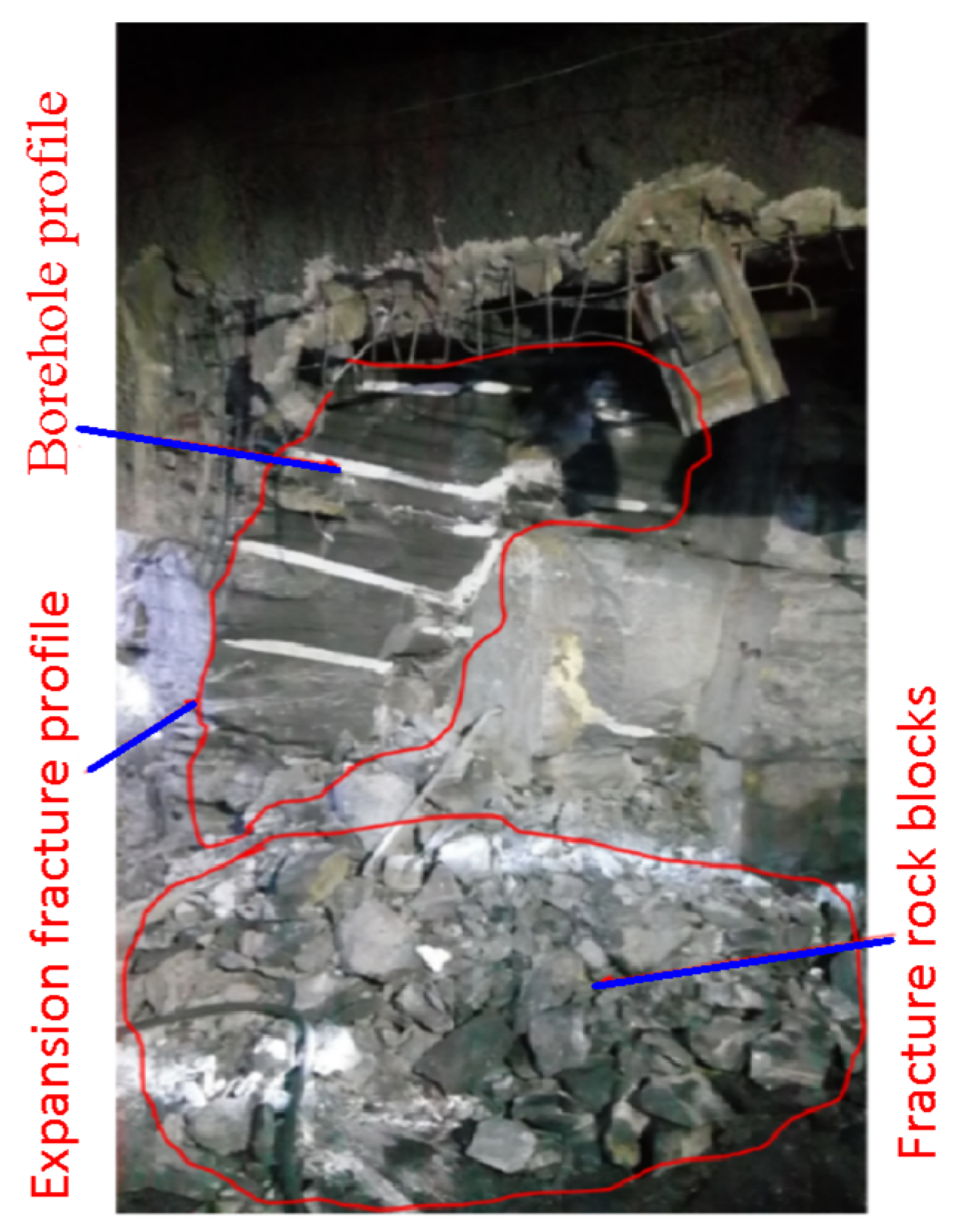
| Rock Type | Density (kg/m3) | Compressive Strength (MPa) | Tensile Strength (MPa) | Elastic Modulus (GPa) | Poisson’s Ratio | Internal Friction Angle (°) | Cohesion (MPa) |
|---|---|---|---|---|---|---|---|
| Sandstone | 2720 | 67.4 | 5.82 | 16.874 | 0.25 | 36.2 | 14.374 |
| Concrete Grade | Cement | Fine Agg. | Coarse Agg. | Water |
|---|---|---|---|---|
| C40 | 398 | 649 | 1155 | 199 |
| Specimen Type | Density (kg/m3) | Compressive Strength (MPa) | Tensile Strength (MPa) | Elastic Modulus (GPa) | Poisson’s Ratio |
|---|---|---|---|---|---|
| C40 concrete | 2400 | 40.74 | 2.79 | 32.5 | 0.2 |
Disclaimer/Publisher’s Note: The statements, opinions and data contained in all publications are solely those of the individual author(s) and contributor(s) and not of MDPI and/or the editor(s). MDPI and/or the editor(s) disclaim responsibility for any injury to people or property resulting from any ideas, methods, instructions or products referred to in the content. |
© 2024 by the authors. Licensee MDPI, Basel, Switzerland. This article is an open access article distributed under the terms and conditions of the Creative Commons Attribution (CC BY) license (https://creativecommons.org/licenses/by/4.0/).
Share and Cite
Yuan, R.; Lian, Z.; Zhang, Q.; Li, M.; Li, H.; Li, Y.; Wu, W. Rock Fracturing Characteristics and Roadway Expansion Application of Static Crushing Agent under Multi-Row Drilling Condition. Appl. Sci. 2024, 14, 9032. https://doi.org/10.3390/app14199032
Yuan R, Lian Z, Zhang Q, Li M, Li H, Li Y, Wu W. Rock Fracturing Characteristics and Roadway Expansion Application of Static Crushing Agent under Multi-Row Drilling Condition. Applied Sciences. 2024; 14(19):9032. https://doi.org/10.3390/app14199032
Chicago/Turabian StyleYuan, Ruifu, Zhongwen Lian, Qunlei Zhang, Mengzhuo Li, Hui Li, Yexin Li, and Wanying Wu. 2024. "Rock Fracturing Characteristics and Roadway Expansion Application of Static Crushing Agent under Multi-Row Drilling Condition" Applied Sciences 14, no. 19: 9032. https://doi.org/10.3390/app14199032






